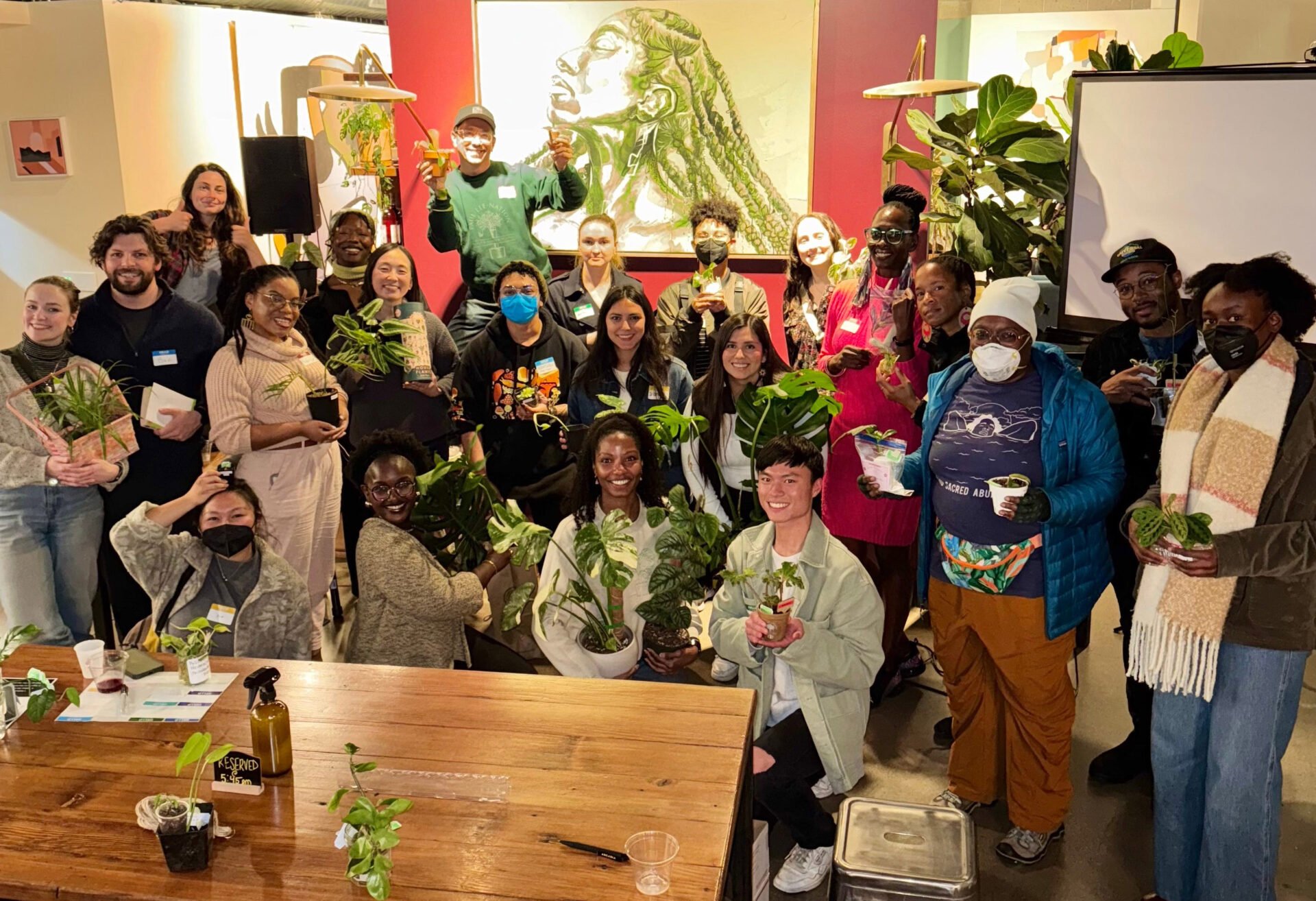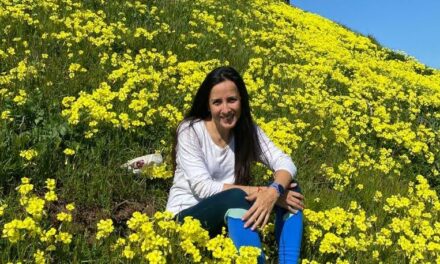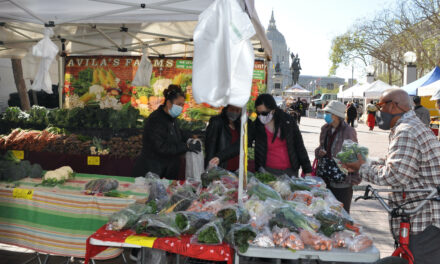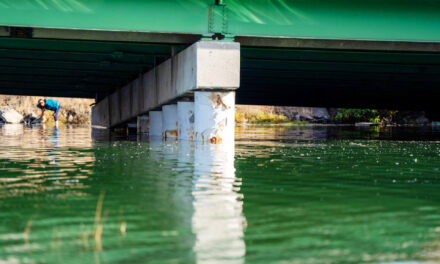“I Invite Everyone To Be a Scientist”
Over the past year, Berkeley-based amateur plant biologist Jasmine Neal has attempted to grow over a thousand plants inside her own home.
Her journey from the co-founder of TUNE, a vibroacoustic technology company, to plant biologist started in a surprising place: toilet bowls.
“I had an idea for a plastic-free pregnancy test that uses a visual indicator in the toilet bowl as a diagnostic environment,” says Neal.
The toilet bowl project kicked off a series of career moves: it sparked an interest in molecular biology and took her to a Brooklyn community lab; what she learned there brought her to the lab’s biochemistry research group studying synthetic spider silk, and then an Entrepreneur-in-Residence position at open access biotech company Arcadia Science.
“At Arcadia, I was known for propagating cuttings from the plants in the office and setting up a little propagation station at my desk and near one of the windows,” says Neal. After she left that role in 2024, she decided to devote all of her time to plant biology.
She received equipment donations from her large network of biologist contacts and built a laboratory in her spare room. Between research at her home lab and partnerships with community groups like Oakland’s Counter Culture Labs, Neal has successfully grown hundreds of plants.
![Jasmine Neal home lab Jasmine Neal in a corner of her home lab. Photo courtesy of Jasmine Neal]](https://www.kneedeeptimes.org/wp-content/uploads/2025/03/1-2_HomeLab.jpg)
Jasmine Neal in a corner of her home lab. Photo: Jasmine Neal
The plants in Neal’s home lab, samples for her experiments in genetic modification and cloning, might not be immediately recognizable as such. She grows tiny plantlets inside clear, plastic boxes with a layer of nutrient-rich gel.
Once the bit of plant is introduced to the gel, its cells begin to rapidly multiply, creating a rough callus of basic, non-specialized cells. Six to eight weeks later, the tissue is introduced to another medium that encourages the mass of callus cells to transform into new cells with specific roles. Roots appear and start to wind their way downward, while stems develop, reaching for sunlight.
This process, plant tissue culture, allows scientists to quickly create virus-free clones, genetically engineer new traits, or even harvest seeds of rare plants. As climate change threatens the survival of up to 40% of all land plants, biologists can grow thousands of endangered species in less than 100 square feet, quickly preserving them and their seeds for future generations. The common sandwort, for example, was removed from the Federal List of Endangered and Threatened Plants in 2021 after volunteers cloned and planted seedlings.
![Plantlets grow in a bed of nutrient-rich gel. Photo courtesy of Jasmine Neal] Plantlets grow in a bed of nutrient-rich gel. Photo courtesy of Jasmine Neal]](https://www.kneedeeptimes.org/wp-content/uploads/2025/03/1-3-alt-Lab3up.jpg)
Plantlets grow in a bed of nutrient-rich gel. Photos: Jasmine Neal
Now, Neal is hoping to democratize access to tissue culture research by creating something of her own: a climate-focused community lab dedicated to plant biology. At her lab, amateurs will have the resources to pursue their own plant tissue culture experiments, generating data for an open-source database on how to grow plants threatened by or vulnerable to climate change. Another community project will gradually acclimate plants to their local environment through grafting. By combining the stress-tolerant roots of one plant with the branches of another, the grafted plant is better able to survive harsher conditions.
“I would love for people to think about what interests them in regards to their plants and how we can create experiments around it,” says Neal. “I want the lab to not just be a scientific hub, but also a social and cultural hub.”

December 2024 plant swap and tissue culture discussion in Oakland. Photo: Jasmine Neal
Neal envisions the lab as a community space, hosting open discussions around controversial topics like genetically modified organisms, and giving advice about sick houseplants. She’s working on determining the scope of the lab’s research and testing a grassroots funding model.
“There’s a lot of evidence of amateurs and self-taught researchers contributing to the hard sciences,” says Neal. “I invite everyone to be a scientist. The world needs your unique, weird, playful ideas.”
MORE
During Women’s History Month, KneeDeep honors the work of women scientists exploring the frontlines of citizen science and local ecology.
Other Recent Posts
Who Will Inherit the Estuary? Training for a Rough Future
The six-month program teaches students aged 17 -24 about the challenges facing communities around the SF Estuary, from Stockton to East Palo Alto.
Split Verdict Over State of the Estuary
Habitat restoration and pollution regulations are holding the Bay steady, but the Delta is losing some of its ecological diversity, says SF Estuary Partnership scorecard.
Volunteers Catch and Release Tiny Owls For Science
In Santa Rosa, citizen scientists capture northern saw-whet owls to help further research on climate impacts to the bird.
Antioch Desalination Plant Could Boost Local Water Supply
The $120 million plant opened this fall and treats 8 million gallons of brackish water a day, 75% of which is drinkable.
How Cities Can Make AI Infrastructure Green
Data centers fueling AI can suck up massive amounts of energy, water and land, but local policies can mitigate the impact.
What to Know about PFAS in Tri-Valley Water
In this nonfiction comic, explore how the city of Pleasanton is dealing with PFAS- contaminated groundwater.
ReaderBoard
Once a month we share reader announcements: jobs, events, reports, and more.










